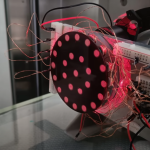Person holding their lower back because of pain
getty
Back pain is the world’s leading cause of disability, affecting more than 619 million people globally, according to a 2020 report from the World Health Organization. Few conditions have such a wide range of causes as back pain — from temporary muscle spasms to terminal metastatic cancer. While back pain is often fleeting and mild, there are key signals that help physicians distinguish between benign and more serious causes.
I spoke with Dr. Lindsey Ross, a board certified neurosurgeon who specializes in the spine, about the symptoms, diagnostics and treatments around back pain. She also shared how artificial intelligence is reshaping the future of spine care.
Common Causes of Back Pain
The most common causes of back pain include muscle or ligament strain from lifting or sudden movements; bulging or ruptured disks that press on nerves; arthritis, which can narrow the space around the spinal cord; osteoporosis, where weakened bones can fracture; and ankylosing spondylitis, which causes inflammation and stiffness in the spine, according to the Mayo Clinic.
Lifestyle choices play a major role in both the development and persistence of back pain, Ross added. “Obesity, sedentary habits and heavy manual labor all increase risk,” she said. Many patients believe resting in bed or on the couch will alleviate their back pain. Ironically, inactivity often worsens pain over time. “Sedentary lifestyle leads to muscle loss, which leads to more strain and more back pain which leads to more sedentary lifestyle choices.”
Over time, this becomes a self-perpetuating “pain cycle” that requires gradual, guided movement and addressing the mental health side of chronic pain. “It’s hard to get out of this loop,” Ross warned.
When Back Pain Could Signal Something Serious
Many patients — especially those with new, persistent back pain — worry that their symptoms could signal something more serious, like cancer, fractures or infection. Here are signs and symptoms to look out for.
Dr. Lindsey Ross
Kerry James
General warning signs include personal or family history of cancer, unexplained weight loss, persistent fatigue, age over 50 and pain that worsens at night. Pain that isn’t clearly linked to posture, movement or activity —”especially pain that wakes you at night — should be evaluated.” Most pain related to arthritis or aging should not worsen when you are resting in bed, Ross noted.
Emergent red-flag symptoms that require immediate medical attention include new weakness or numbness in the limbs, difficulty walking or maintaining balance and loss of bladder or bowel control. These may indicate serious spinal pathology causing back pain and should prompt emergency evaluation.
Patients with fever, a weakened immune system (from cancer or AIDS, for instance) and active intravenous drug use are particularly higher risk for pathology.
It is important not to ignore any symptom, particularly if it has never been evaluated by a physician. In the ER, a physician will take a history, perform a physical exam and determine whether to order imaging or an urgent consultation with a spine specialist. “Conditions that cause loss of function are time-sensitive,” Ross said. “They must be addressed immediately to restore functionality.”
When To Get Imaging for Your Back Pain
Even when imaging is considered, restraint is important. Three-quarters of people in developed countries will experience some sort of back pain in their life, and “most times the pain will improve with rest and conservative treatment,” Ross said. MRI or CT scans are typically warranted only if pain lasts longer than three months or if general warning signs or urgent red-flag symptoms appear.
Ross cautioned that unnecessary imaging can reveal incidental findings, which may lead to unnecessary procedures. She recalled one patient who had a CT scan for kidney stones that incidentally revealed a benign nerve tumor. “She did not have back pain, but after the biopsy, she developed severe pain that radiated down her legs,” she said. “All procedures and interventions have risk, even if very small.”
For new, mild back pain without red flags, a primary care physician is usually a safe first stop. Ross often sees patients who don’t need surgery but benefit from a spine specialist’s guidance toward “the correct and evidence-based care.”
Non-Surgical Treatment of Back Pain
There are many proven, nonsurgical options for managing the majority of back pain cases, Ross said. These include improving posture and ergonomics, building core strength through physical therapy and exploring complementary approaches such as chiropractic manipulation, acupuncture and massage. Short-term use of anti-inflammatory medications or muscle relaxants can also help.
One study found that cognitive behavioral therapy, a form of talk therapy, has shown supportive evidence for improving pain, disability, fear avoidance and self-efficacy in patients with chronic low back pain. Ross herself has conducted research using virtual reality platforms to deliver CBT remotely, an approach she said has been successful and is now FDA-approved for patients with chronic low back pain.
Surgical Treatment of Back Pain using AI
When conservative measures are ineffective or insufficient, surgery may be an option. It is important for patients to have reasonable expectations, however. Not every patient will improve after surgery. One study found that over two years, recurrent disc herniation occurred in up to 23% of patients and reoperation rates ranged from up to 13%.
Dr. Lindsey Ross in the operating room
Dr. Lindsey Ross
Recovery can range from six weeks for a simple procedure to many months for complex spinal reconstructions. There are efforts to decrease downtime for patients, Ross said. “Minimally invasive techniques such as the use of tubes, endoscopy and small incisions tend to be associated with quicker recoveries,” she explained. “Artificial disc replacements, which maintain motion in the spine, often have a quicker recovery than fusion surgeries.”
The operating room itself is changing fast. “We are in the age of artificial intelligence and robots,” she noted. “Most major spine centers and hospitals have a spine robot.” These tools assist in precise screw placement, improving safety and reducing surgeon fatigue. Artificial intelligence also helps plan hardware positioning and may eventually guide surgeons toward the best approach for each patient’s anatomy and biology.
The Bigger Picture
Ross said many patients still overlook the most effective solutions: movement, education and consistent self-care. “While only a small percentage of patients are appropriate candidates for spine surgery,” she said, “many overlook evidence-based approaches to back pain management.”
Education and lifestyle modifications — such as exercise, weight management and activity adjustments — can lead to significant improvement for many.
First Appeared on
Source link













